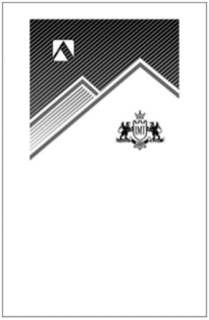Stay up to date with the latest Gevers news by signing up for our newsletter.
They say that “You can’t buy a good reputation, you must earn it”… however this is not the whole truth

The advertising of tobacco and tobacco products has been prohibited in Belgium, at least with a few exceptions since 1999 and since 2021 altogether. Nonetheless, smoker or not, the public is quite familiar with the Marlboro brand which includes the “red rooftop” that is omnipresent on its packaging. And since the Marlboro-marks have a reputation, third parties should think twice before applying these on a product, whether these are cigarettes or something different entirely.
Indeed, a reputed trademark grants protection for identical and similar goods or services, but also for dissimilar goods or services. Provided that the signs are identical or similar, the earlier mark enjoys a reputation, and the use of the trademark applied for takes unfair advantage of, or is detrimental to, the distinctive character or reputation of the reputed mark without due cause. In this case, the owner of such a trademark can take actions, as shown below…
Case – Marlboro vs. International Masis Tabak
In March 2019, Philip Morris Brands Sàrl (PM), owner of the Marlboro-trademarks, filed an opposition against the IMT figurative trademark that was filed in the name of “International Masis Tabak” LLC (IMT). The opposition was filed on the grounds of both likelihood of confusion and reputation of the earlier marks invoked by Philip Morris Brands as they claimed that IMT took unfair advantage of the distinctive character or reputation of its figurative Marlboro-mark, i.e. “red rooftop”. After the decisions of the EUIPO Opposition Division and the Board of Appeal, it was up to the General Court to issue a decision in this matter.
I. Reputation
In order to claim reputation, the earlier registered trademark should be known to a substantial portion of the relevant public in the territory in which the trademark is registered. It is not necessary that the trademark is known throughout the entire territory, but rather, it is sufficient that the mark is known in a substantial part of it.
To decide if a trademark has reputation, the following elements are taken into account: the market share of the trademark, the intensity, geographical extent and duration of use, and the extent of investments made by the trademark owner to make it famous. Note that it would be incorrect to assume that a trademark will have reputation purely on the basis of our knowledge and experience in everyday life.
In this case, PM argued that the earlier trademark has been subject to long-standing and intensive use and is generally known on the relevant market. The Board of Appeal confirmed that the market annual reports, top hundred brand rankings from independent sources and surveys, together with actual sales figures, market share figures and information about advertising, supported PM’s claims in respect of the reputation and strong distinctive character of both the ‘Marlboro’ rooftop and the ‘Marlboro’ mark.
IMT did not deny the earlier marks’ reputation before the General Court.
II. Identity or similarity between the signs
In order to (possibly) infringe a reputed trademark, the signs need to be identical or similar. The types of detriment referred to in Article 8(5) of Regulation 2017/1001 may be the consequence of a lesser degree of similarity between the earlier mark and the mark applied for, provided that it is sufficient for the relevant public to make a connection between those marks. That is, to establish a link between them.


In this case, the “Marlboro” and “International Masis Tabak” marks are visually similar to a low degree. The Court ruled that the sign applied for was purely figurative since its word elements were illegible. Therefore, the signs at issue had a common dominant element in the form of a colored polygon in the upper part which, despite their differences, produced a similar visual impression, i.e. that of a white triangle. Furthermore, a phonetic comparison cannot be made, since the mark applied for is a purely figurative mark and a conceptual comparison is also not possible since the sign did not convey any particular concept.
III. The link between the signs
The third condition, which is often overlooked, is a needed link between the signs, i.e. that the newly applied for trademark, in the context of the contested goods or services, brings the earlier reputed mark to mind.
To determine this, several factors are taken into account:
- The strength of the reputation of the earlier mark.
- The degree of similarity between the conflicting marks.
- The nature of the goods and services, including the degree of similarity or dissimilarity between those goods or services, and the relevant public.
- The degree of distinctive character of the earlier reputed mark, whether inherent or acquired through use.
- The existence of likelihood of confusion on the part of the public.
In the present case, the applicant did not dispute the substantial reputation and enhanced distinctiveness acquired through use of the earlier mark, the fact that the goods at issue are identical or similar, or the fact that the relevant public at issue is also identical.
Considering that the Court already ruled that the signs were visually similar to a low degree, it held that the relevant public would establish a link between the marks.
IV. Unfair advantage of, or detriment to, the distinctiveness or the repute of the earlier mark
Detriment is the consequence of an association between the earlier reputed mark and the conflicting sign in the minds of the relevant public. The more readily, and strongly, the earlier reputed mark is brought to mind by the new sign, the greater the likelihood that the current or future use of this sign would take unfair advantage of the distinctiveness or repute of the earlier mark.
Taking unfair advantage of an earlier reputed mark does not mean that the applicant of the trademark applied for deliberately intents to exploit the goodwill attached to the earlier trademark. The idea of unfair advantage refers to the possibility that the goods or services covered by the mark applied for will take on the characteristics or image of the earlier reputed mark, making the marketing of those goods or services easier due to the association with the earlier mark’s established reputation.
Consumers might be led to think that the polygonal element of the mark applied for is just a variation of the rooftop-shaped polygonal element of the earlier mark since this is widely used, in various colors, and for various cigarette ranges. As a result, for the marketing effort done by PM to establish and maintain the reputation of its mark, the goods marketed under the trademark application could be perceived as being associated with the Marlboro-marks, thereby facilitating their promotion and marketing without any monetary compensation.
V. Without due cause
The existence of a cause justifying the use of the trademark applied for is a defense that the applicant may raise in case all the other conditions are met. Therefore, it is up to an applicant of a trademark to show that it has due cause to use the trademark application.
There is no general rule to decide if the use of a sign is with or without due cause. Therefore, this will be a factual decision by the Offices. The condition of due cause is in any case not fulfilled merely by the fact that the sign is particularly suitable for identifying the goods or services for which it is used.
In this case, IMT claims that its use constitutes due cause since the mark applied for represents Mount Ararat or at least a mountain in case the relevant public in the EU does not identify the figurative element as Mount Ararat. The Court ruled that the applicant does not, however, explain how that argument constitutes due cause for the use of the mark applied for. Just because it is the perception of the applicant does not mean that the relevant public will share this perception.
The Court furthermore ruled that the reference to earlier registered trademarks for the contested sign in countries outside the EU are not relevant because of the principle of territoriality.
Conclusion
It’s a fact that the scope of protection of trademarks with reputation is broader. However, it is important for trademark owners to properly document the use of their mark, as well as its market share and advertising investment. The reputation of an earlier trademark will not be presumed and the burden of proof is substantial.
Furthermore, even though the reputation ground was, amongst other reasons, created for trademark owners to oppose or cancel the use or registration of a trademark active in a different sector and applied, respectively registered for different goods and services, the fact that there should be a link between the signs to establish unfair advantage or detriment, indirectly means that the goods and services of both signs still have a certain relevance.
So where no likelihood of confusion is necessary to invoke the reputation ground, it still plays a role when comparing the signs.
Should you have questions regarding the reputation of your sign or how to tackle an objection from an earlier reputed mark, our experts at Gevers are available to assist.